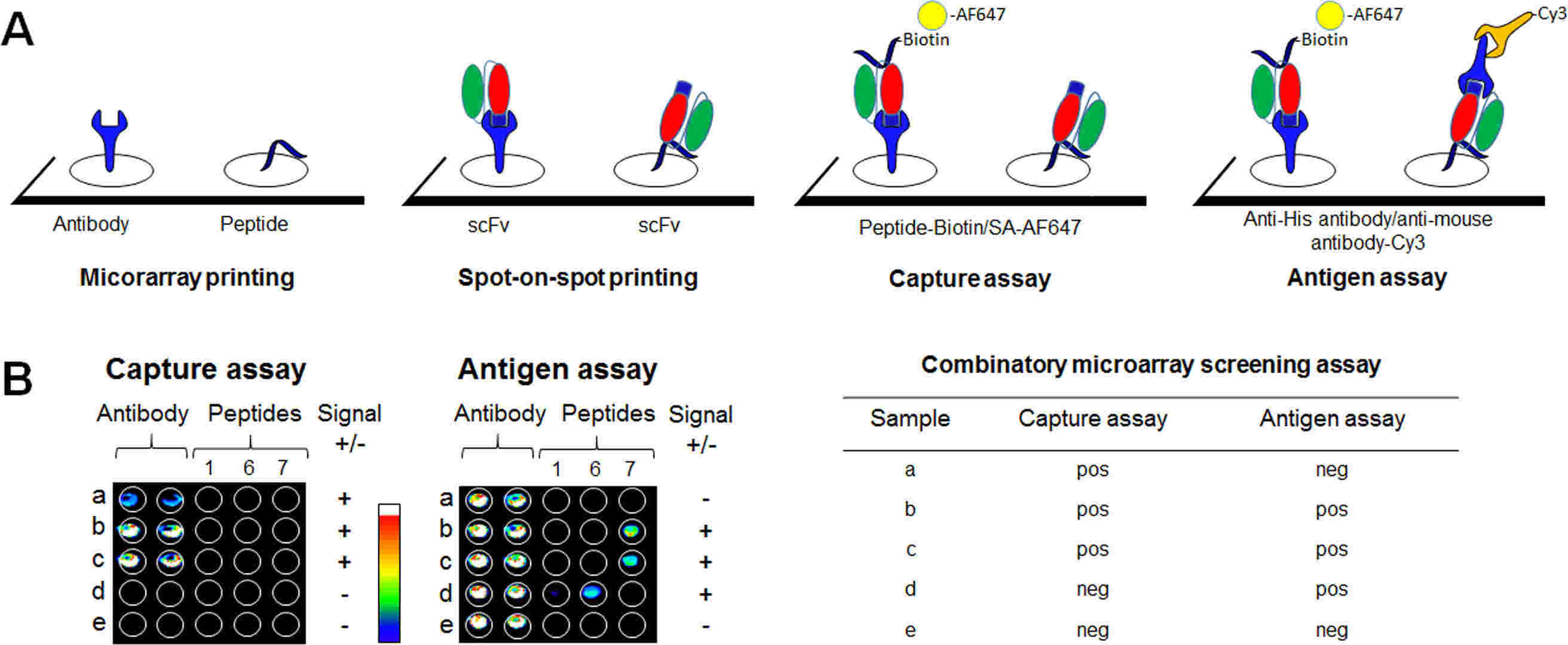Glycopeptide Microarray
Creative Biolabs is a world-class biotechnology service provider. After more than ten years of accumulation, we have a strong expert team and experimental platform to provide a series of glycoprotein analysis services such as Glycopeptide Microarray.
Microarray Technology
Microarray technology is an indispensable research tool for genomics and proteomics, which has been developed for more than 20 years since it was first developed in 1984. Microarray technology can analyze thousands of parameters simultaneously in a single experiment. The microdots of capture molecules are fixed in rows on the solid support and exposed to the sample containing the corresponding binding molecules. Readout systems based on fluorescence, chemiluminescence, mass spectrometry, radioactivity or electrochemistry can detect the complex formed by each microdot. These miniaturized and parallel combined analyses are highly sensitive, and the analytical capabilities of the method can be amplified by microarray gene expression analysis.
Glycoprotein Microarray
Based on the principle of antigen-antibody specific binding, a glycopeptide microarray has emerged in recent years to screen antibodies against different glycopeptide antigens. For glycopeptide microarrays, pre-synthesized glycopeptide fragments are immobilized on a solid support, target molecules extracted from cells are labeled and hybridized with fixed complementary capture probes, and then the captured target molecules are measured and quantified.
Based on the advantages of a high-throughput, highly miniaturized platform and a wide range of possible combinations of a small number of samples required for partner research, glycopeptide microarrays have been used in multiple biopharmaceutical fields, such as the discovery and confirmation of biomarkers, biomolecules interaction relationship, drug target and its mechanism of action, protein function, disease diagnosis, health inspection field, etc.
The Difference Between Glycopeptide Microarray and Glycoprotein Microarray
Usually, according to the difference of probe molecules, immune microarray technology can be divided into glycoprotein microarray technology and polypeptide microarray technology. The former fixes the intact glycoprotein molecule as a probe to capture the antibody, while the latter fixes the fragmented glycopeptide fragment of the glycoprotein molecule as a probe to capture the antibody.
The probe of glycoprotein microarray technology is a complete glycoprotein molecule, on which multiple epitopes can bind to the corresponding antibody, so its signal comes from the superposition of multiple antibodies. With this method, we can only know whether the glycoprotein antigen is bound to the antibody, but not exactly which epitopes the antibody is bound to. In other words, the final result of the combination is known, but the specific combination information is unknown. The probes of the glycopeptide microarray are polypeptide fragments obtained by fragmenting the complete glycoprotein molecule, which can know the type of binding antibody and the precise information of the binding epitope, and display the specific binding information in front of us.
 Fig.1 Screening using microarrays containing peptides/glycopeptides.1, 2
Fig.1 Screening using microarrays containing peptides/glycopeptides.1, 2
Creative Biolabs has a professional technical team in glycopeptide microarrays. We are confident to provide you with high-quality services and promote your progress in the drug development process. If you have any questions about glycopeptide microarrays, please contact us for more information.
References
-
Persson, Nina, et al. "A Combinatory Antibody–Antigen Microarray Assay for High-Content Screening of Single-Chain Fragment Variable Clones from Recombinant Libraries." PLoS One 11.12 (2016): e0168761.
-
Under Open Access license CC BY 4.0, without modification.
For Research Use Only.
Related Services

 Fig.1 Screening using microarrays containing peptides/glycopeptides.1, 2
Fig.1 Screening using microarrays containing peptides/glycopeptides.1, 2



